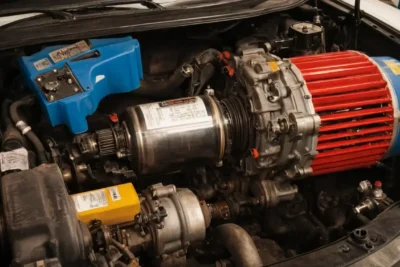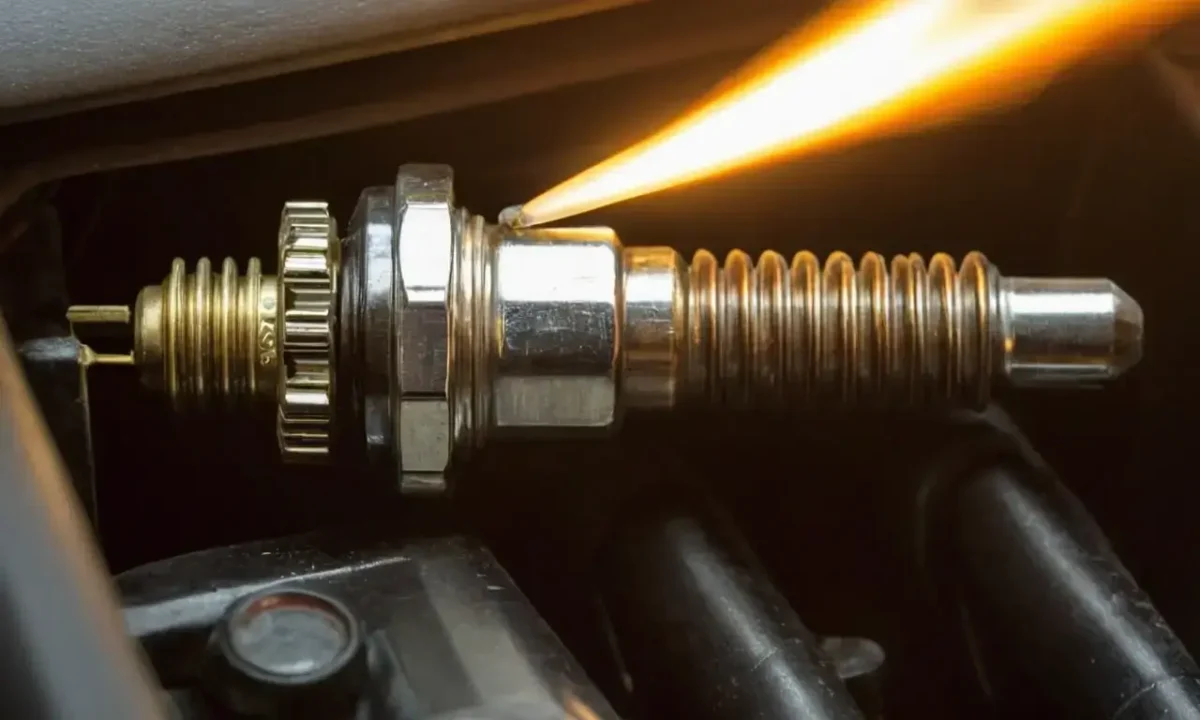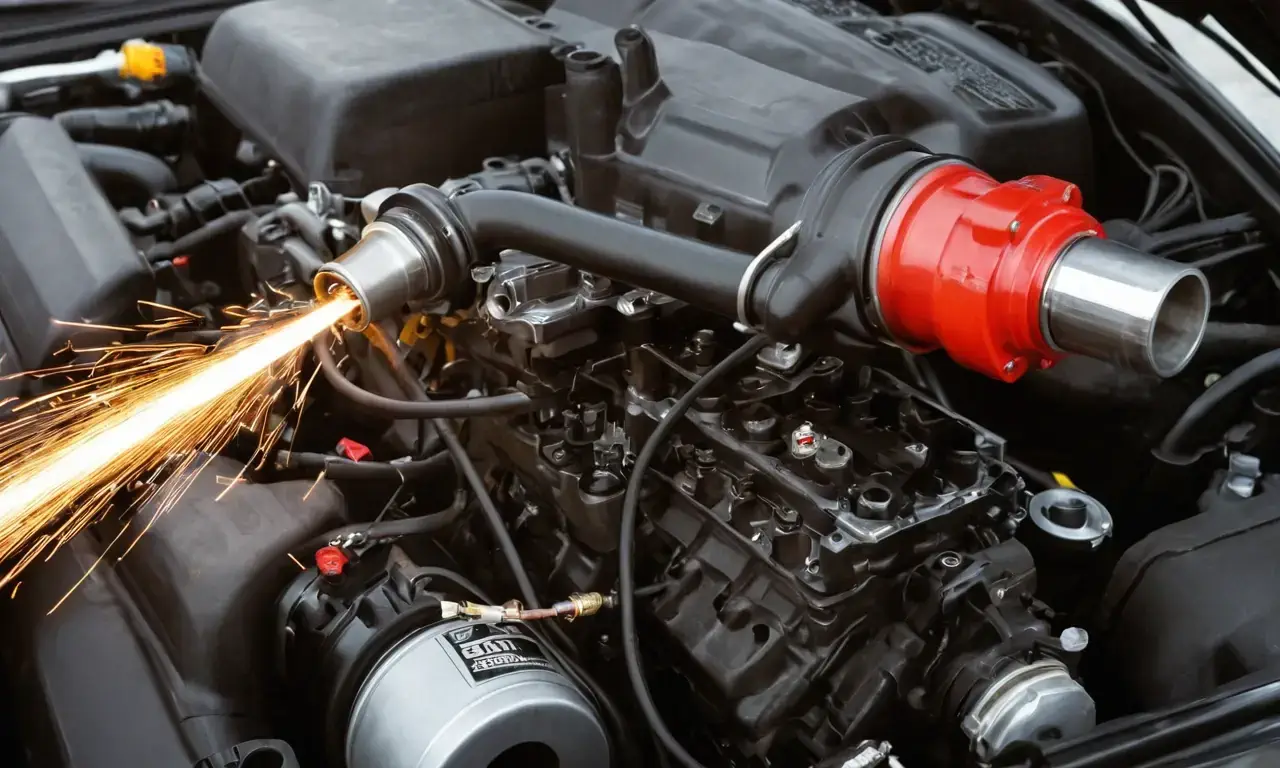
Ignition System: Powering Your Engine's Spark

The ignition system is a vital component of any internal combustion engine, playing a crucial role in converting fuel into usable energy. This intricate network of components ensures that the air-fuel mixture within the cylinders ignites at precisely the right moment, ultimately driving the vehicle's motion. Without this precise spark, engines would simply not function. Understanding how this system works is essential for anyone interested in car maintenance or simply wanting to delve deeper into the mechanics of their vehicles. This article will explore the various components of an ignition system, their functions, and their impact on engine performance.
The primary objective of this article is to provide a comprehensive overview of the ignition system. We will delve into the different parts involved, such as spark plugs, coils, distributors, and electronic ignition systems. Additionally, we'll discuss the importance of ignition timing and how it affects engine efficiency. Finally, we'll touch upon maintenance tips and common troubleshooting issues to help readers keep their vehicles running smoothly. By the end of this article, you will have a solid understanding of how your car's ignition system works and its role in powering your vehicle.
Components of the Ignition System
The ignition system is essentially a sophisticated network designed to create a spark that ignites the air-fuel mixture within an engine's cylinders. This process involves several key components working together seamlessly:
- Spark Plugs: These are the heart of the ignition system, responsible for generating the spark that initiates combustion. Each cylinder in an engine has its own dedicated spark plug, ensuring a controlled and efficient burn.
- Coils: Coils are essential for producing high voltage electricity needed to create the spark. They convert battery power into the electrical energy required by the spark plugs.
- Distributor: The distributor plays a crucial role in directing the spark from the coil to the correct cylinder at the right time. It ensures that each spark occurs precisely when the piston is at its optimal position for combustion.
- Ignition Wires: These wires connect the spark plug to the coil, transmitting the electrical signal needed to ignite the fuel. They also act as a pathway for the high-voltage current generated by the coil.
Understanding these components and their functions is crucial for anyone interested in car maintenance or simply wanting to delve deeper into the mechanics of their vehicles. Each component plays a specific role in ensuring that the engine operates efficiently and reliably.
Spark Plugs and Their Function
Spark plugs are arguably the most visible part of the ignition system, as they sit right at the heart of each cylinder's combustion process. These small but crucial components have a vital role to play:
- Generating the Spark: The spark plug contains a conductive electrode that ignites the air-fuel mixture when an electrical current passes through it. This creates the spark that initiates combustion, ultimately driving the engine's motion.
- Maintaining Ignition Efficiency: Over time, spark plugs can wear down and lose their ability to generate a strong enough spark. Regular maintenance, including replacing worn-out plugs, is essential for maintaining optimal engine performance and fuel efficiency.
- Types of Spark Plugs: There are various types of spark plugs available, each designed with specific characteristics tailored to different engine types and operating conditions. Choosing the right type can significantly impact an engine's performance and longevity.
Maintaining properly functioning spark plugs is crucial for ensuring your car runs smoothly. Neglecting this aspect could lead to reduced fuel efficiency, increased emissions, and even damage to the engine itself.
Coils and Their Role in Generating Spark
The coil plays a critical role in generating the high voltage electricity needed to create the spark that ignites the air-fuel mixture. This electrical energy is essential for initiating combustion within the engine's cylinders:
- Voltage Conversion: The coil converts battery power into the high voltage required by the spark plugs. This process involves electromagnetic induction, where a changing magnetic field creates an electric current.
- Spark Timing Control: Coils are often integrated with the distributor system, ensuring that the spark occurs at the precise moment when the piston is in the optimal position for combustion. This timing control is crucial for maximizing engine efficiency and performance.
- Coil Types: There are various types of coils available, each designed to meet specific requirements based on engine size, power output, and operating conditions. Choosing the right coil can significantly impact an engine's performance and longevity.
Understanding how the coil contributes to the ignition process is essential for anyone interested in car maintenance or simply wanting to delve deeper into the mechanics of their vehicles.
Distributor Systems for Efficient Spark Delivery

The distributor plays a crucial role in ensuring that the spark from the coil reaches the correct cylinder at the right time. This system ensures efficient combustion by delivering the spark precisely when the piston is positioned for optimal ignition:
- Timing Control: The distributor's primary function is to control the timing of the spark, ensuring it occurs at the precise moment when the piston is in its ideal position for combustion.
- Rotor and Cap System: The distributor utilizes a rotor that rotates according to the engine's crankshaft rotation. This rotation aligns the spark plug with the cylinder being ignited, maximizing efficiency and performance.
- Electronic Distributors: Modern vehicles often utilize electronic distributors that use sensors to control spark timing based on factors like engine speed and load. These systems offer improved accuracy and responsiveness compared to traditional mechanical distributors.
Maintaining a properly functioning distributor is crucial for ensuring your car runs smoothly. Neglecting this aspect could lead to reduced fuel efficiency, increased emissions, and even damage to the engine itself.
Ignition Timing and Its Importance
Ignition timing refers to the precise moment at which the spark plug fires in relation to the piston's position within the cylinder. This timing is crucial for maximizing engine performance:
- Optimal Combustion: Proper ignition timing ensures that the spark occurs when the air-fuel mixture is ready for combustion, leading to efficient and complete burning of fuel.
- Engine Efficiency: Optimizing ignition timing can improve fuel economy by reducing wasted energy due to incomplete combustion. This translates to better gas mileage and reduced emissions.
- Performance Enhancement: In some cases, adjusting ignition timing can enhance engine performance by increasing power output or improving throttle response. However, this should be done cautiously as improper adjustments can negatively impact engine efficiency.
Understanding the importance of ignition timing is essential for anyone interested in car maintenance or simply wanting to delve deeper into the mechanics of their vehicles.
Electronic Ignition Systems
Modern cars often utilize electronic ignition systems, which have revolutionized the way engines ignite fuel. These systems offer several advantages over traditional mechanical ignition systems:
- Improved Efficiency: Electronic ignition systems can improve fuel efficiency by optimizing spark timing based on factors like engine speed and load. This results in less wasted energy and improved overall performance.
- Increased Durability: Electronic ignition systems are generally more durable than their mechanical counterparts, as they have fewer moving parts that can wear out over time. This translates to longer lifespan for the ignition system itself.
- Enhanced Control: Electronic ignition systems offer greater control over spark timing compared to traditional systems. This allows mechanics to fine-tune engine performance and optimize fuel efficiency based on specific needs.
Electronic ignition systems are becoming increasingly common in modern vehicles, offering a combination of improved performance, durability, and control.
Impact on Engine Performance and Fuel Economy
The ignition system plays a significant role in both engine performance and fuel economy:
- Increased Power Output: Optimizing spark timing through advanced ignition strategies can increase power output by ensuring the combustion process is as efficient as possible. This translates to improved acceleration and overall driving experience.
- Improved Fuel Efficiency: By reducing wasted energy due to incomplete combustion, electronic ignition systems contribute to better fuel economy. This translates to lower operating costs for drivers over time.
- Reduced Emissions: Efficient combustion through optimized spark timing can lead to reduced emissions of harmful pollutants, contributing to a cleaner environment and healthier air quality.
Maintaining a properly functioning ignition system is crucial for ensuring your car runs smoothly and efficiently. Neglecting this aspect could lead to decreased performance, increased fuel consumption, and even damage to the engine itself.
Conclusion
The ignition system plays a vital role in the operation of most internal combustion engines. From generating the spark that ignites fuel to optimizing timing for maximum efficiency, this system is essential for ensuring your car runs smoothly and efficiently. Understanding how it works and taking steps to maintain its proper function can significantly impact your driving experience and overall vehicle performance.
Leave a Reply





Related Links